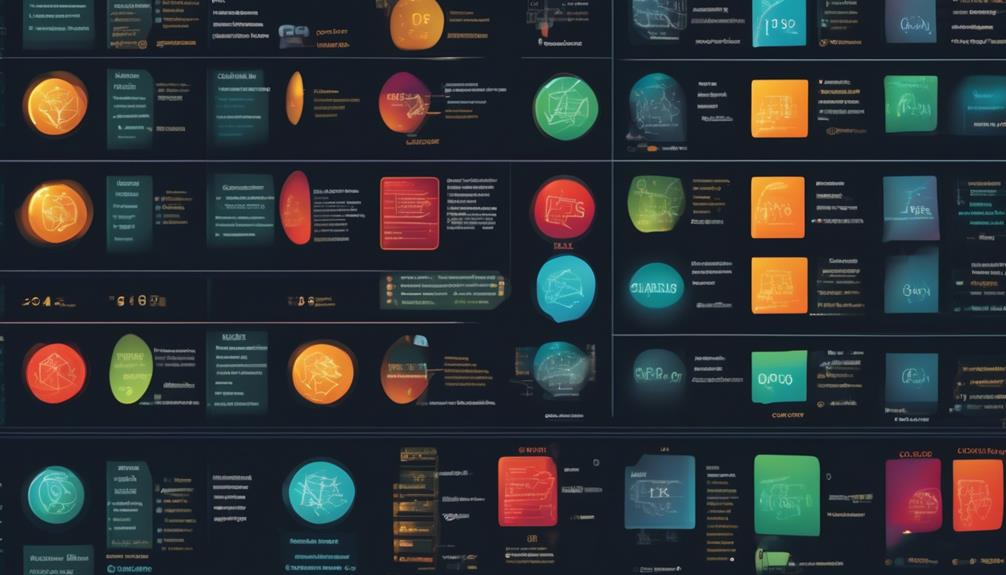To balance speed and quality in continuous delivery, you need to automate thoroughly and incorporate layered testing that catches issues early without delaying releases. Set clear thresholds for passing critical tests before moving to production, and use staging environments for less urgent checks. Continuously refine your processes and support scalability to keep up with growth. Maintaining this balance is key to delivering reliable updates quickly, and exploring more strategies can help you master it.
Key Takeaways
- Implement layered testing strategies, including critical tests before deployment and comprehensive checks in staging environments.
- Automate the entire pipeline to reduce manual errors and streamline rapid releases.
- Set quality thresholds that must be met before progressing to production, ensuring reliability.
- Use parallel testing and scalable infrastructure to accelerate feedback loops without compromising quality.
- Incorporate real-time monitoring and feedback tools to quickly identify and resolve issues post-deployment.

In today’s fast-paced software development landscape, delivering updates quickly is vital, but not at the expense of quality. You need a strategy that enables rapid releases without sacrificing reliability, and that’s where automated testing and deployment pipelines come into play. Automated testing allows you to verify code changes swiftly, catching bugs early and reducing manual effort. When integrated into your deployment pipelines, these tests run automatically every time you push a change, ensuring that only quality code moves forward. This setup helps you maintain a steady flow of updates while keeping defects at bay.
Your deployment pipelines serve as the backbone of continuous delivery, automating the entire process from code commit to deployment. By designing these pipelines thoughtfully, you can streamline workflows, eliminate bottlenecks, and reduce human error. Automated testing becomes a vital component here, running a suite of tests—unit, integration, and end-to-end—each time code is pushed. This immediate feedback loop lets you identify issues before they reach production, saving you from costly rollbacks and reputation damage. Plus, with continuous integration, you can merge changes frequently, ensuring that your team’s work remains cohesive and conflicts are minimized.
But balancing speed and quality isn’t just about automation; it also involves setting the right thresholds for your tests and deployment stages. For instance, you might decide that certain critical tests must pass before deploying to production, while less critical checks can be part of a staging environment. This layered approach helps you speed up the release process without compromising on quality standards. Monitoring tools integrated into your pipelines provide real-time insights, allowing you to catch and resolve issues promptly, further safeguarding your release quality.
It’s essential to treat automated testing and deployment pipelines as living systems that evolve with your project. Regularly reviewing and refining your test suites and pipeline configurations ensures they stay effective as your codebase grows. Invest in scalable infrastructure and automation tools that support parallel testing and faster deployment cycles. This way, you’re not only delivering faster but also maintaining the high standards your users expect. Remember, the goal isn’t just rapid releases; it’s delivering reliable, high-quality software that meets user needs efficiently. Incorporating color accuracy considerations into your testing process can help ensure visual fidelity in user-facing features, especially for applications with graphical components.
Frequently Asked Questions
How Do Teams Prioritize Features During Rapid Deployment Cycles?
You prioritize features during rapid deployment cycles by focusing on feature prioritization methods like MoSCoW or Kano models, ensuring stakeholder alignment. You evaluate each feature’s value, urgency, and impact, then collaborate with stakeholders to confirm priorities. This way, you can deliver high-value features quickly while managing risks. Regularly re-evaluate priorities based on feedback and changing needs, keeping your team aligned and focused on delivering the most important features first.
What Metrics Best Measure Quality in Continuous Delivery?
Think of quality metrics as your compass in the stormy seas of development. You’ll want to track quality benchmarks like defect density, which acts as your lighthouse, guiding you away from hidden hazards. Lower defect density indicates healthier code, while consistent quality benchmarks reveal your progress. These metrics keep your ship steady, ensuring rapid deployment doesn’t leave quality behind, and help you navigate towards reliable, high-quality releases.
How Can Automated Testing Improve Delivery Speed Without Sacrificing Quality?
Test automation speeds up your delivery process by enabling rapid, repeated testing, so you catch issues early without delays. It also helps with risk mitigation by ensuring consistent test coverage and reducing human error. With automated tests running frequently, you get quick feedback on code quality, allowing you to deploy faster while maintaining high standards. This way, you deliver quickly without sacrificing the reliability your users expect.
What Are Common Pitfalls in Balancing Speed and Quality?
Did you know 60% of teams struggle with balancing speed and quality? You might fall into common pitfalls like neglecting thorough testing or rushing releases, which create trade-off dilemmas. Without proper risk management, quality suffers, and bugs slip through. To avoid this, prioritize automated tests and incremental releases, ensuring you move fast while maintaining high standards. Recognizing these pitfalls helps you make smarter decisions under pressure.
How Does Organizational Culture Influence Continuous Delivery Success?
Your organizational culture greatly influences continuous delivery success. If cultural resistance exists, teams may hesitate to adopt new practices or tools, slowing progress. Strong leadership influence helps foster a culture of openness, collaboration, and innovation, which accelerates delivery cycles without sacrificing quality. By promoting transparency and supporting change, you create an environment where continuous delivery thrives, ensuring faster releases and higher customer satisfaction.
Conclusion
As you navigate the tightrope between speed and quality, remember it’s like steering a ship through choppy waters—you need steady hands and a clear vision. Push too fast, and you risk capsizing quality; slow down, and opportunities drift away. Find your balance, and you’ll sail smoothly, a master of both swift currents and calm seas. With mindful adjustments, you’ll craft a delivery process that’s as resilient as a mighty oak, rooted yet reaching forward.









